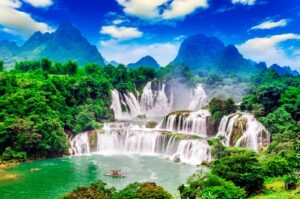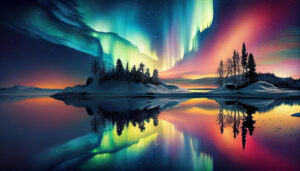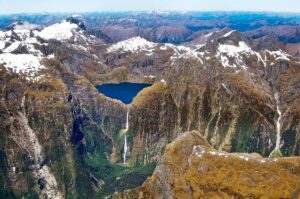To say that our planet is a treasure trove of wonders is to state the obvious. The world, with its rich tapestry of ancient and contemporary marvels, architectural and engineering feats, and breathtaking natural beauty, never ceases to amaze. Yet, it’s quite astonishing how often lists of natural wonders constrain themselves to a mere handful of entries. This observation has propelled us to broaden the scope, showcasing a more expansive catalog that not only includes frequently lauded sites but also highlights those gems our editorial team finds uniquely breathtaking and significant.
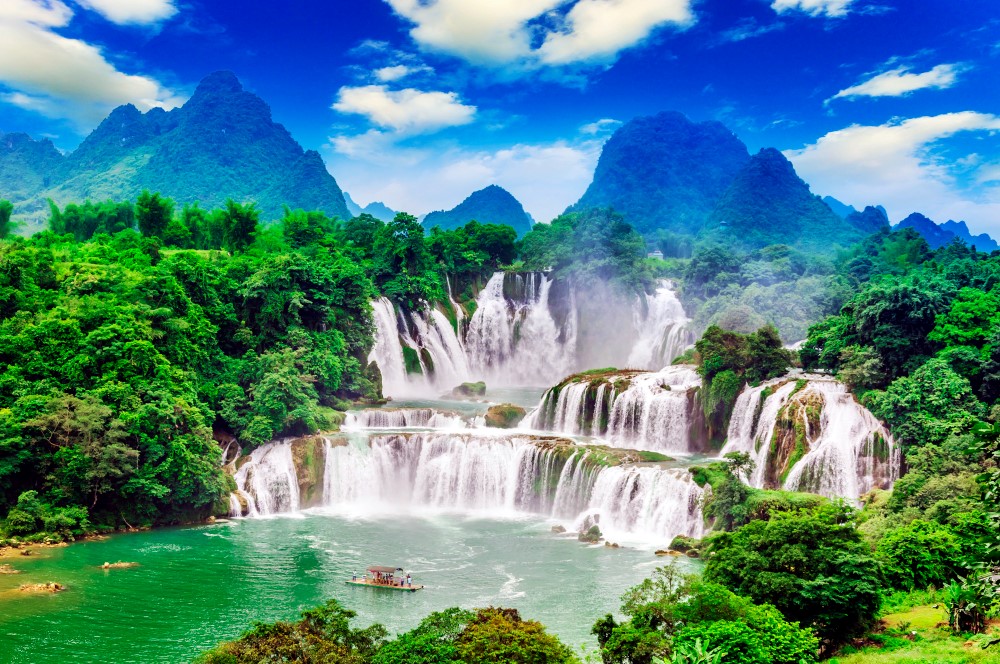
Image by 4045 on Freepik
Our curated selection spans the vast African deserts, the eruptive beauty of European volcanoes, and encompasses rare natural phenomena that grace various corners of the globe. Join us as we embark on a journey through 37 of Earth’s most awe-inspiring natural wonders, celebrating the planet’s unparalleled natural splendor.
Table of Contents
1. Jeju Island
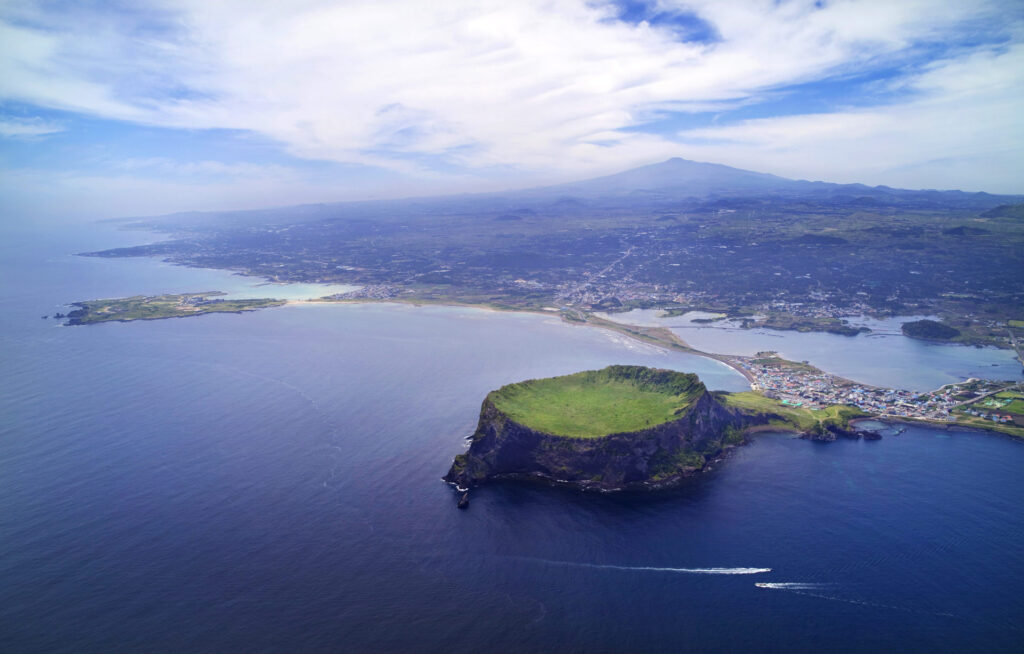
Image by New7Wonders of Nature
Jeju Island, South Korea’s premier vacation destination, is a volcanic island renowned for its unique geological features and enchanting natural beauty. Dominated by Hallasan, the highest mountain in South Korea, the island offers a rich tapestry of attractions including the UNESCO-listed Manjanggul Lava Tubes, a testament to the island’s volcanic origins. The iconic Jeongbang Waterfall, which plunges directly into the sea, and the serene Cheonjiyeon Waterfall, add to the island’s allure. Jeju is not just about natural wonders; it’s a cultural haven with a matriarchal society, distinct cuisine, and the famous Haenyeo, female divers UNESCO recognized for their traditional way of life. This blend of cultural richness and natural splendor makes Jeju Island an unparalleled destination for travelers.
2. Table Mountain
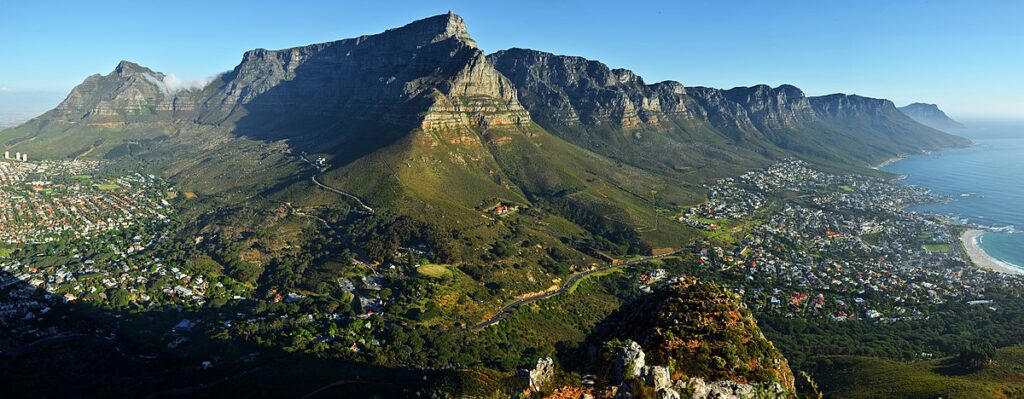
Image by Wikipedia
Table Mountain, a prominent landmark overlooking Cape Town, South Africa, is celebrated for its flat-topped silhouette against the city’s skyline. This geological marvel is part of the Table Mountain National Park and serves as a significant tourist attraction, drawing visitors from around the globe. Accessible by cable car or hiking trails, it offers breathtaking panoramic views of Cape Town, the nearby peaks, and the azure Atlantic Ocean. The mountain is also home to a unique but fragile biodiversity, including the fynbos vegetation, part of the Cape Floral Region, a UNESCO World Heritage site. Its rich flora and fauna make it a haven for nature enthusiasts and conservationists alike.
3. Puerto Princesa Subterranean River
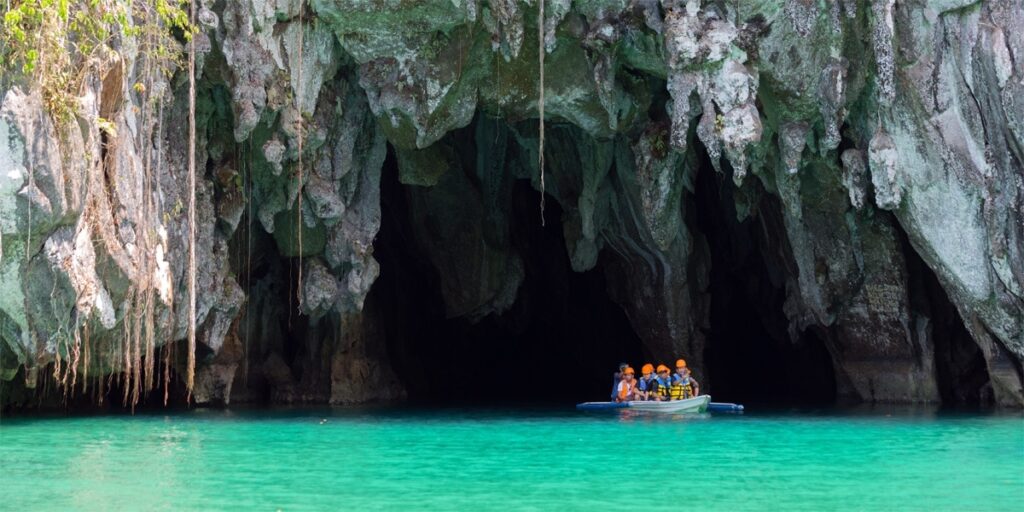
Image by AirAsia
The Puerto Princesa Subterranean River National Park, located on the island of Palawan in the Philippines, is a globally recognized natural wonder. This UNESCO World Heritage site is famed for its spectacular limestone karst landscape and its navigable underground river, one of the longest in the world. The river winds through a series of magnificent caves before flowing directly into the South China Sea. Along its path, visitors encounter stunning formations of stalactites and stalagmites, as well as several large chambers. The park is also a biodiversity hotspot, hosting a rich variety of wildlife, including unique species that call this enchanting underground river system home. Its ecological significance and natural beauty make it a must-visit destination for eco-tourists and adventurers alike.
4. Ha Long Bay
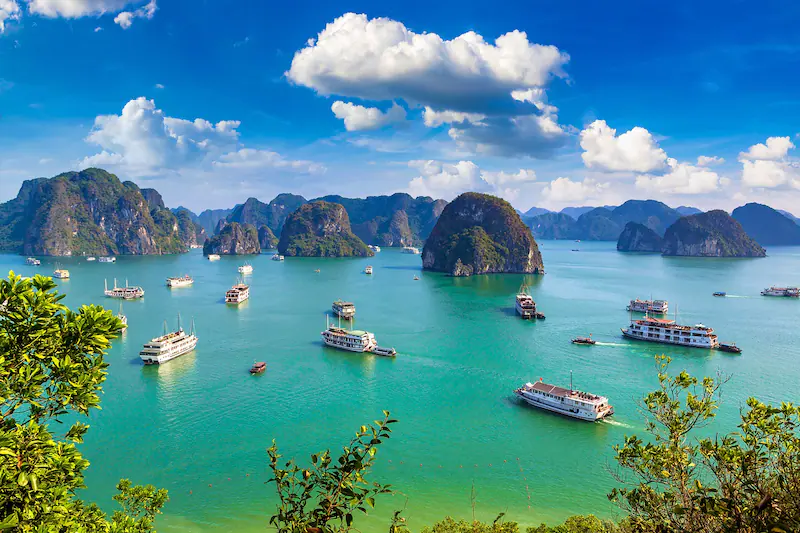
Image by Hotels.com
Ha Long Bay, located in northeastern Vietnam, stands as a picturesque marvel, recognized by UNESCO as a World Heritage Site. The bay is renowned for its crystal-clear emerald waters and over 1,600 majestic limestone islands and islets, many of which are uninhabited and covered by lush rainforests. These karst formations have evolved over 20 million years, creating a spectacular seascape. Ha Long Bay is not only a visual delight but also a haven for biodiversity, featuring a variety of ecosystems and historic cave formations. It’s a must-visit destination for adventurers and nature enthusiasts seeking tranquility and natural beauty.
5. Komodo Island
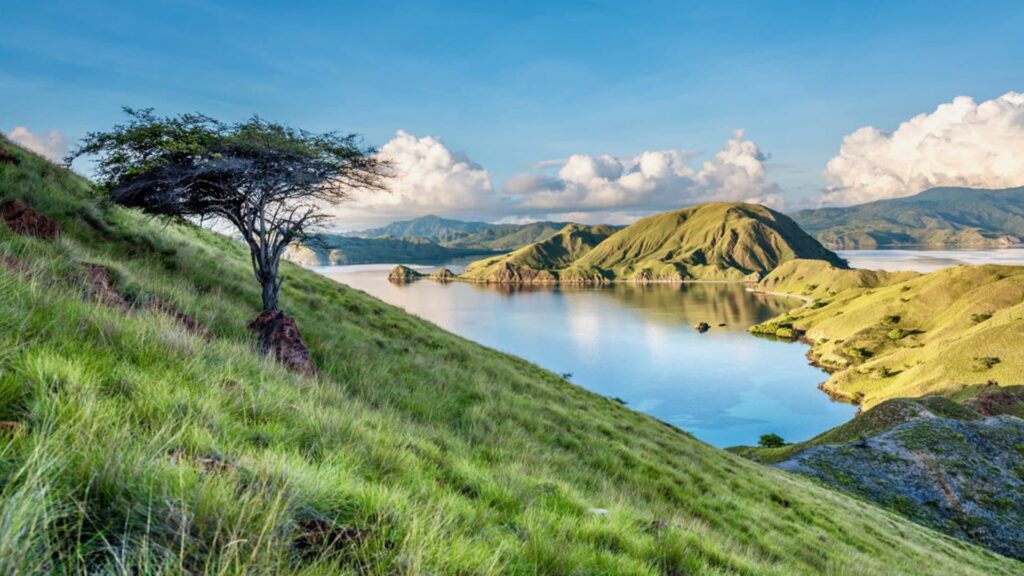
Image by EYOSExpeditions.com
Komodo Island, nestled within Indonesia’s Lesser Sunda chain, is globally celebrated as the native habitat of the intriguing Komodo dragons, the planet’s largest living lizards. This UNESCO World Heritage site offers more than its renowned reptilian inhabitants; it’s a haven of biodiversity, boasting a unique fauna and flora ecosystem. The island’s rugged hillsides, tropical savannahs, and pristine beaches encapsulate an unspoiled beauty, making it a prime destination for eco-tourists. Komodo Island’s surrounding waters are equally mesmerizing, offering world-class diving sites teeming with vibrant marine life.
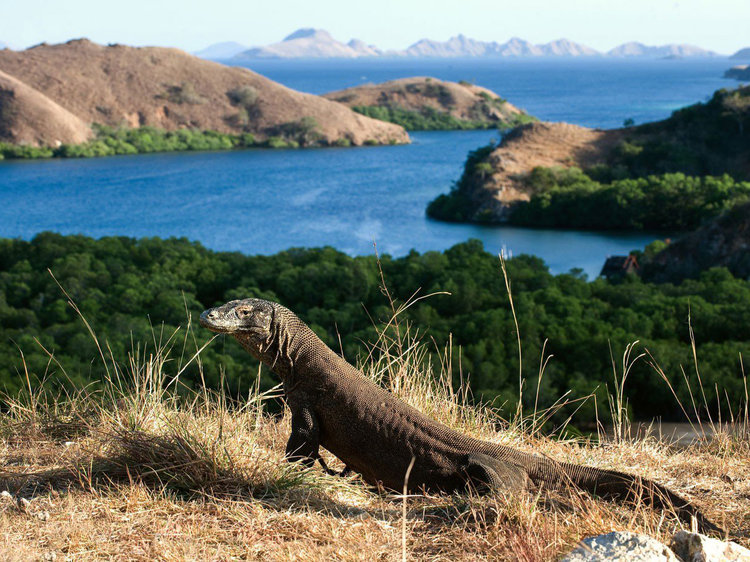
Image by HelloFlores.com
6. Iguazu Falls
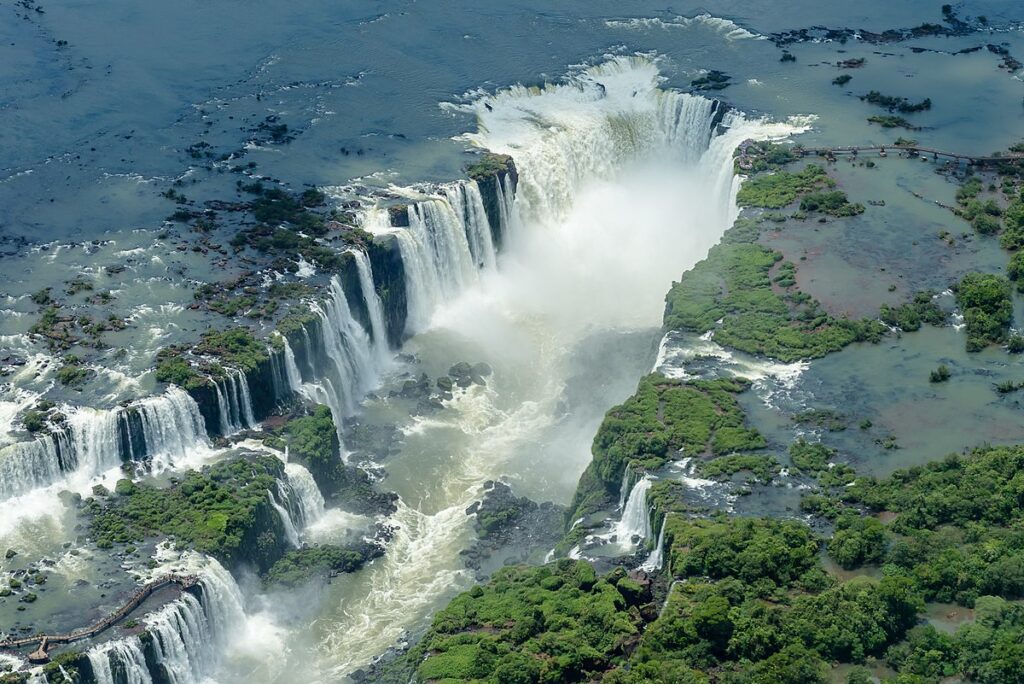
Image by Wikipedia
Iguazu Falls, straddling the border between Argentina and Brazil, is a majestic natural wonder that surpasses imagination. Comprising approximately 275 individual waterfalls spread over nearly 3 kilometers, it is one of the planet’s most awe-inspiring sights. The falls are surrounded by lush, subtropical rainforest, home to a myriad of wildlife species, enhancing its breathtaking beauty. The thunderous roar of water plummeting into the Iguazu River is a powerful testament to nature’s force, making it a must-visit for nature lovers and adventure seekers alike.
7. Victoria Falls
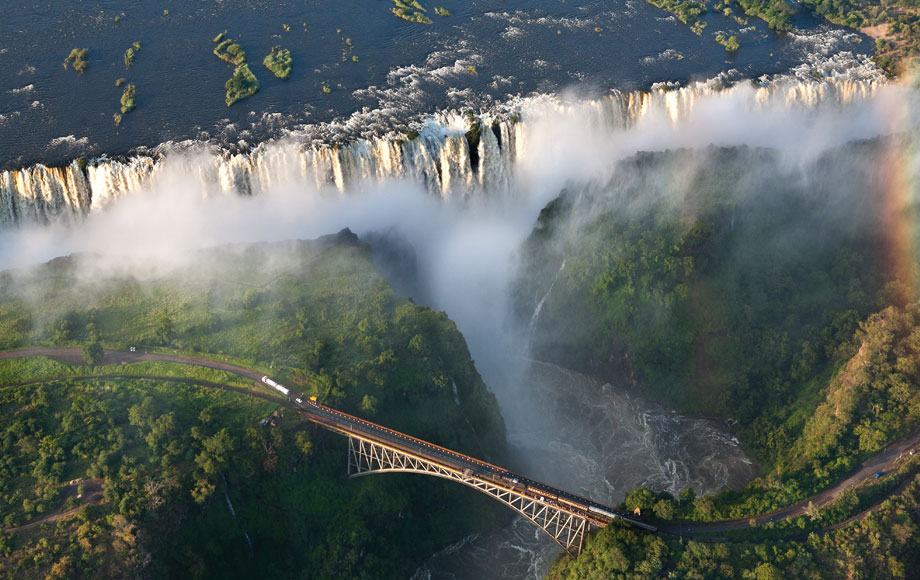
Image by African Wildlife Safaris
Victoria Falls, known as “The Smoke That Thunders,” is a natural marvel on the Zambezi River, at the border between Zambia and Zimbabwe. It is one of Earth’s largest and most famous waterfalls, with a width of over a kilometer and a height of 108 meters, creating a spectacular mist and magnificent rainbows. This UNESCO World Heritage Site is surrounded by lush rainforest, hosting diverse wildlife. The sheer power and beauty of Victoria Falls make it a breathtaking sight and a top destination for tourists seeking the majesty of nature.
8. The Great Barrier Reef
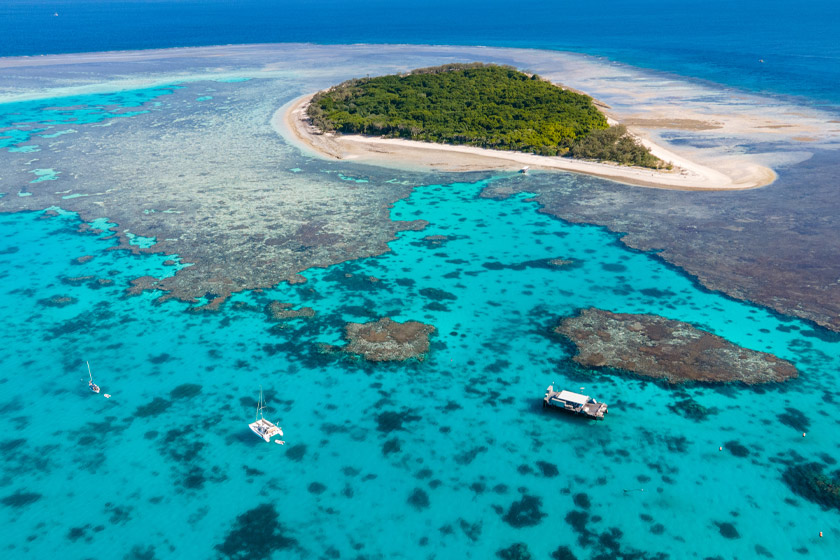
Image by greatbarrierreef.org
The Great Barrier Reef, off the coast of Queensland, Australia, is the world’s largest coral reef system, visible even from space. Encompassing over 2,900 individual reefs and 900 islands stretching for over 2,300 kilometers, it is a mesmerizing underwater landscape rich in biodiversity. This UNESCO World Heritage site is home to a dazzling array of marine life, including thousands of species of fish, corals, and other sea creatures. A paradise for divers and snorkelers, the reef offers a spectacular glimpse into the vibrant life that thrives beneath the ocean’s surface.
9. The Grand Canyon
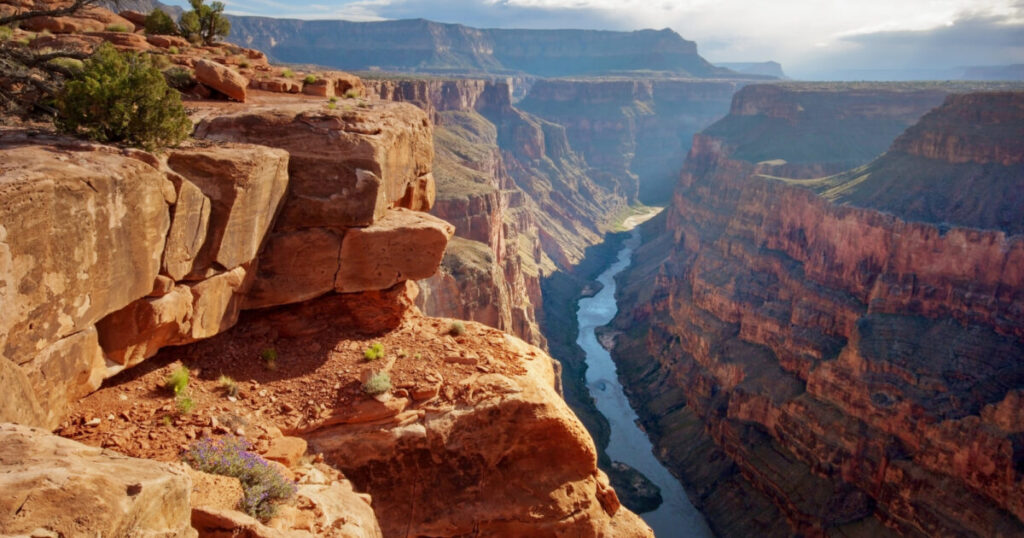
Image by National Park Foundation
The Grand Canyon, a majestic natural wonder in Arizona, USA, captivates visitors with its immense scale and striking landscape. Carved over millions of years by the Colorado River, it stretches over 277 miles in length, up to 18 miles in width, and over a mile deep. The Canyon’s vast array of geological features and layers reveal Earth’s history, while its breathtaking vistas and ever-changing colors at sunrise and sunset offer awe-inspiring experiences. A symbol of nature’s power and beauty, the Grand Canyon is a timeless and unforgettable destination.
10. Nighttime Aurorae
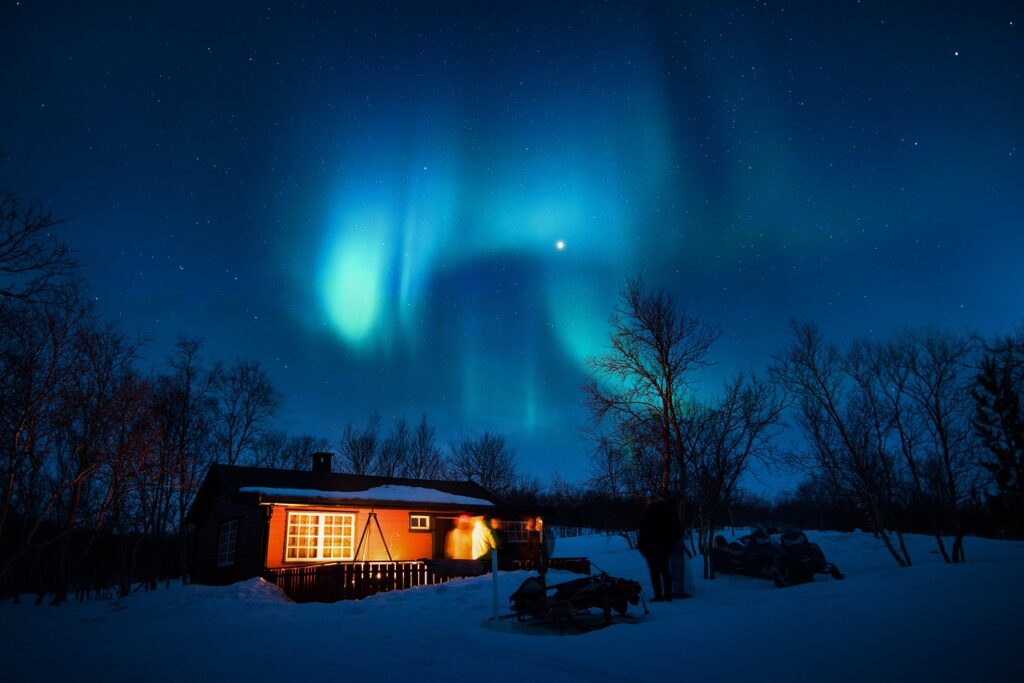
Nighttime aurorae, or northern lights, are a spectacular natural phenomenon that illuminates the sky with stunning colors and patterns. This magical display occurs when charged particles from the sun collide with Earth’s magnetic field and atmosphere, particularly around the polar regions. The result is a mesmerizing dance of green, pink, violet, and sometimes even red curtains of light, rippling across the night sky. Best viewed in high-latitude regions during darker, clearer nights, aurorae enchant onlookers with a glimpse into the planet’s dynamic interactions with space.
11. Paricutín Volcano
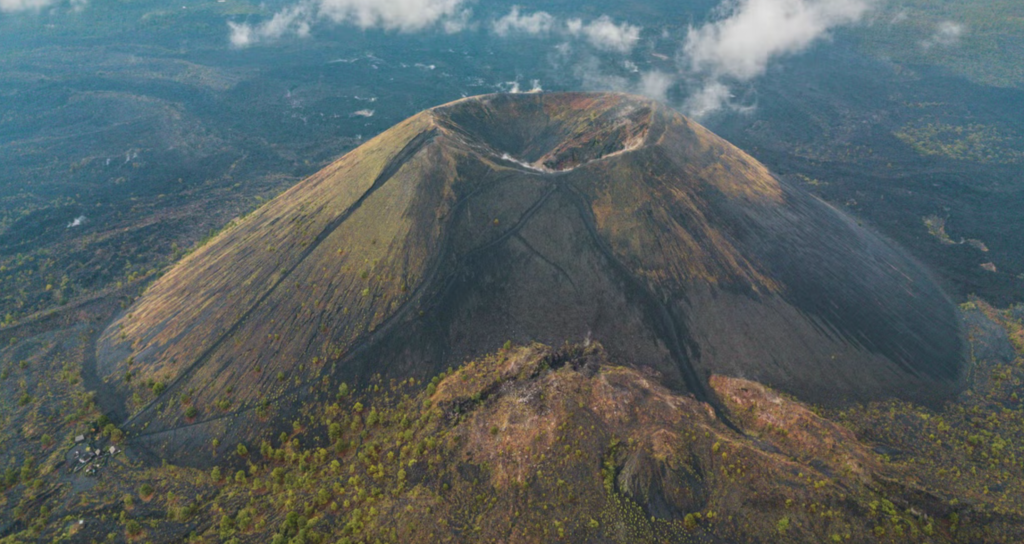
Image by Seven Natural Wonders
Paricutín, a cinder cone volcano in Michoacán, Mexico, presents a unique case in volcanic history. It emerged suddenly from a cornfield in 1943, enabling scientists to witness the birth and lifecycle of a volcano for the first time. Over nine years, Paricutín unleashed lava flows that covered seven square miles, burying local villages. Remarkably, no lives were lost. Today, its dormant crater and the buried church spire of San Juan Parangaricutiro offer haunting yet fascinating sights, reminding us of nature’s unpredictable power.
12. El Yunque
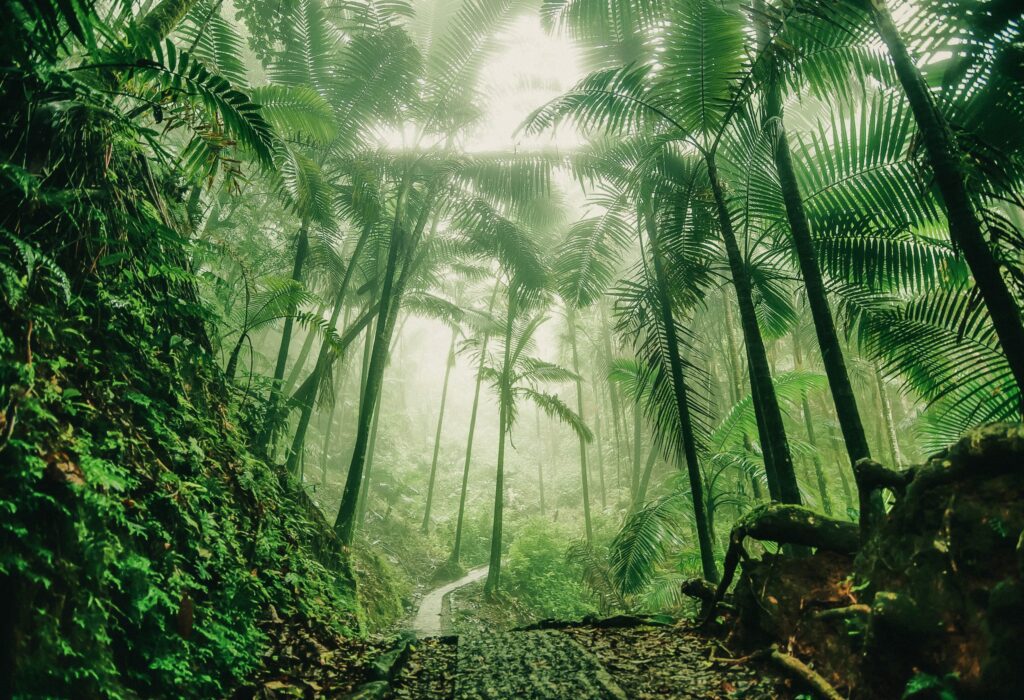
Image by www.yakimankagbu.ru
El Yunque National Forest, located in northeastern Puerto Rico, stands as a lush, verdant oasis amid the Caribbean. As the only tropical rainforest in the U.S. National Forest System, it boasts a rich biodiversity, including rare trees and wildlife, some found nowhere else on the planet. Crisscrossed by hiking trails, El Yunque invites visitors to explore its waterfalls, misty peaks, and verdant landscapes. The forest’s significance extends beyond its beauty, playing a crucial role in Indigenous Taíno culture and serving as a critical water source for the island.
13. Giant’s Causeway
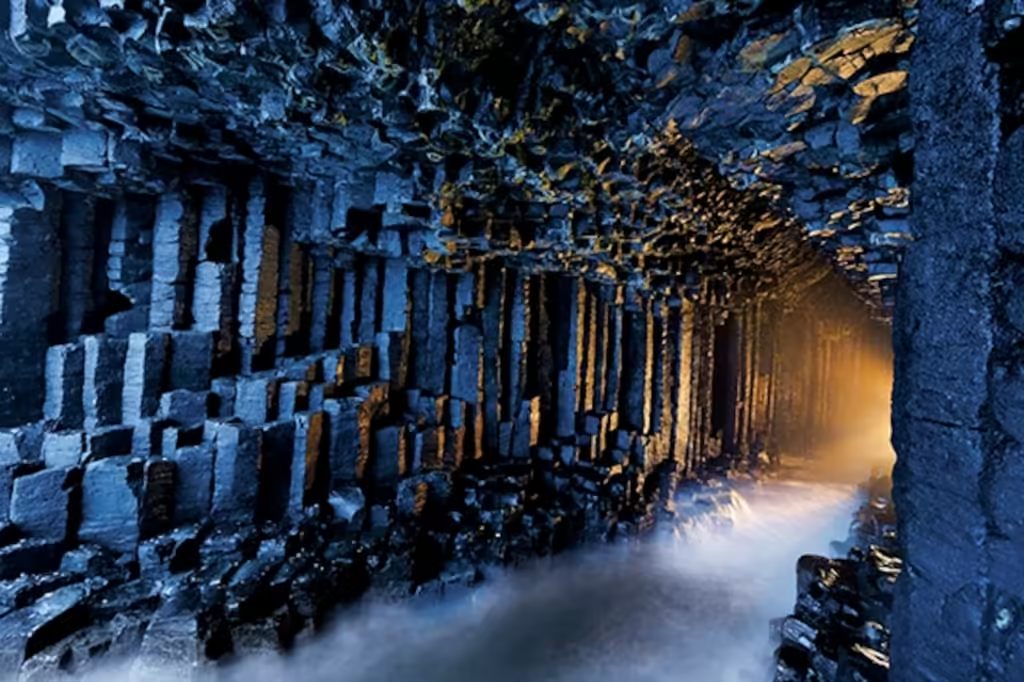
Image by National Geographic
The Giant’s Causeway, located on the Northern Irish coast, is a natural wonder steeped in myth and geological significance. Formed approximately 60 million years ago by volcanic activity, it consists of about 40,000 interlocking basalt columns, many hexagonal, that create a surreal pavement leading into the sea. Local legend attributes its creation to the Irish giant Finn McCool, constructing a causeway to Scotland to confront a rival. It’s a UNESCO World Heritage Site, attracting visitors worldwide to marvel at its unique geological formations and stunning coastal landscape.
14. Jeita Grotto
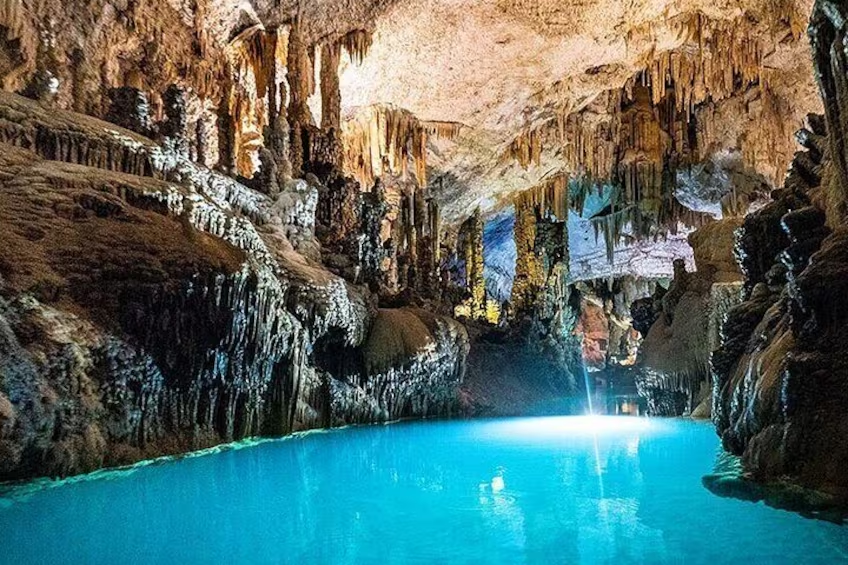
Image by www.expedia.com.my
Jeita Grotto, nestled in the Nahr al-Kalb valley just north of Beirut, Lebanon, is a captivating system of limestone caves that comprise one of the country’s natural wonders. Split into two main parts, the upper and lower galleries, the grotto showcases an array of stalactites and stalagmites, sculpted by nature across millennia. The lower section features a serene underground river that visitors can explore by boat, offering a unique glimpse into the Earth’s subterranean beauty. Recognized for its ecological and historical significance, Jeita Grotto is a testament to nature’s artistry and resilience.
15. The Galapagos Islands
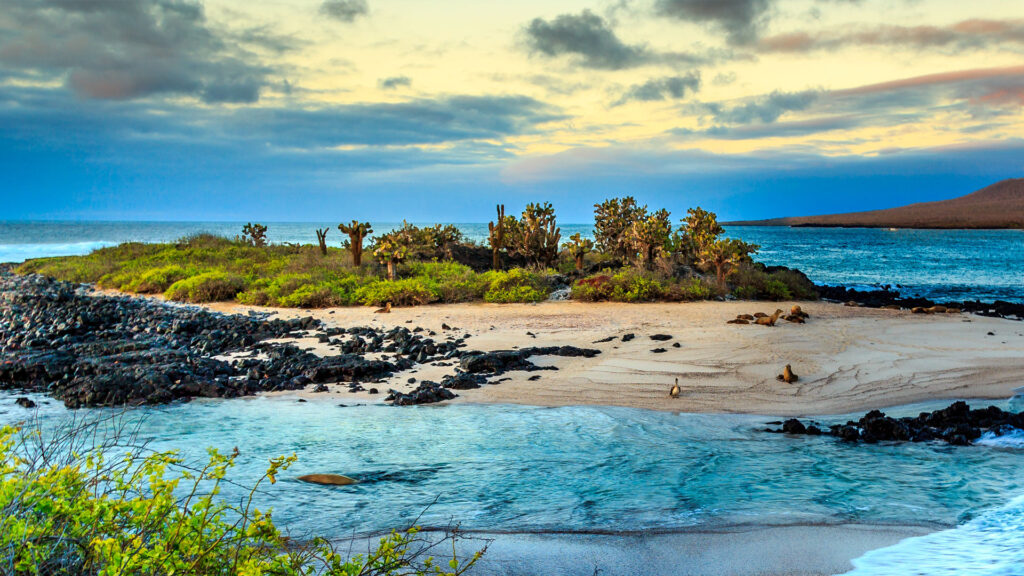
Image by andBeyond.com
The Galapagos Islands, a volcanic archipelago in the Pacific Ocean, are renowned for their unique ecosystem, which inspired Charles Darwin’s theory of natural selection. Located about 1,000 km off Ecuador’s coast, these islands are home to a diverse array of endemic species, such as giant tortoises, marine iguanas, and blue-footed boobies. The convergence of three ocean currents creates an extraordinary variety of marine life. The Galapagos are a living laboratory for scientific research and a prime destination for ecotourism, emphasizing conservation and the study of evolution.
16. Mount Everest
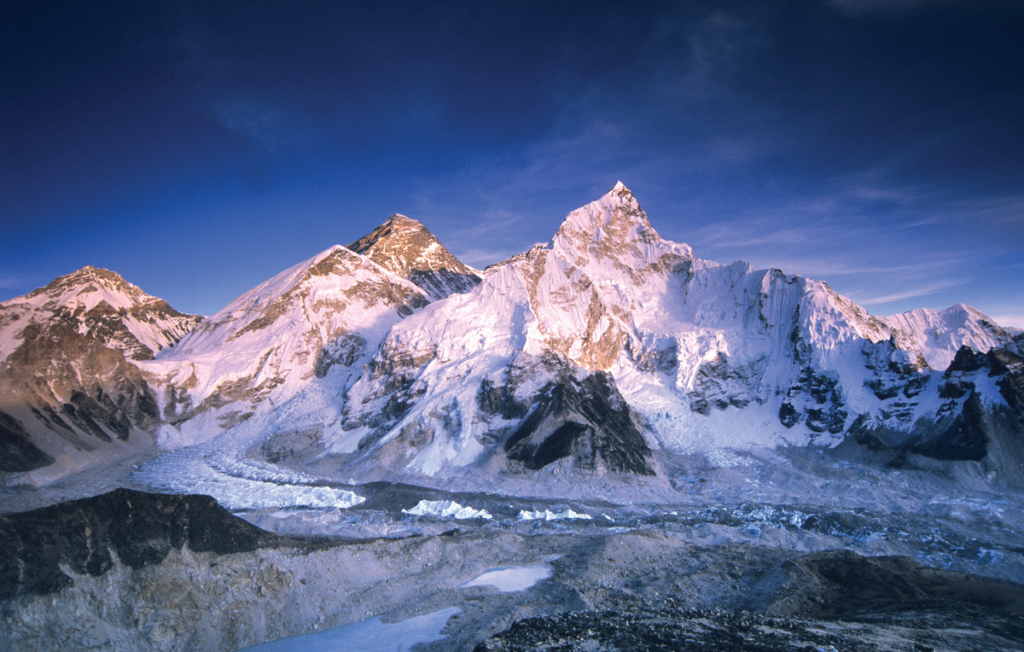
Image by Scientific American
Mount Everest stands as a colossal beacon on the border between Nepal and Tibet, soaring to a staggering height of 8,848.86 meters (29,031.7 feet) above sea level. Known as the world’s highest peak, it beckons climbers from across the globe, offering them the ultimate mountaineering challenge. The journey to Everest’s summit is fraught with peril, including the treacherous Khumbu Icefall, extreme weather conditions, and altitude sickness. Despite the dangers, reaching the top affords climbers unparalleled views and a sense of accomplishment like no other.
17. The Dead Sea
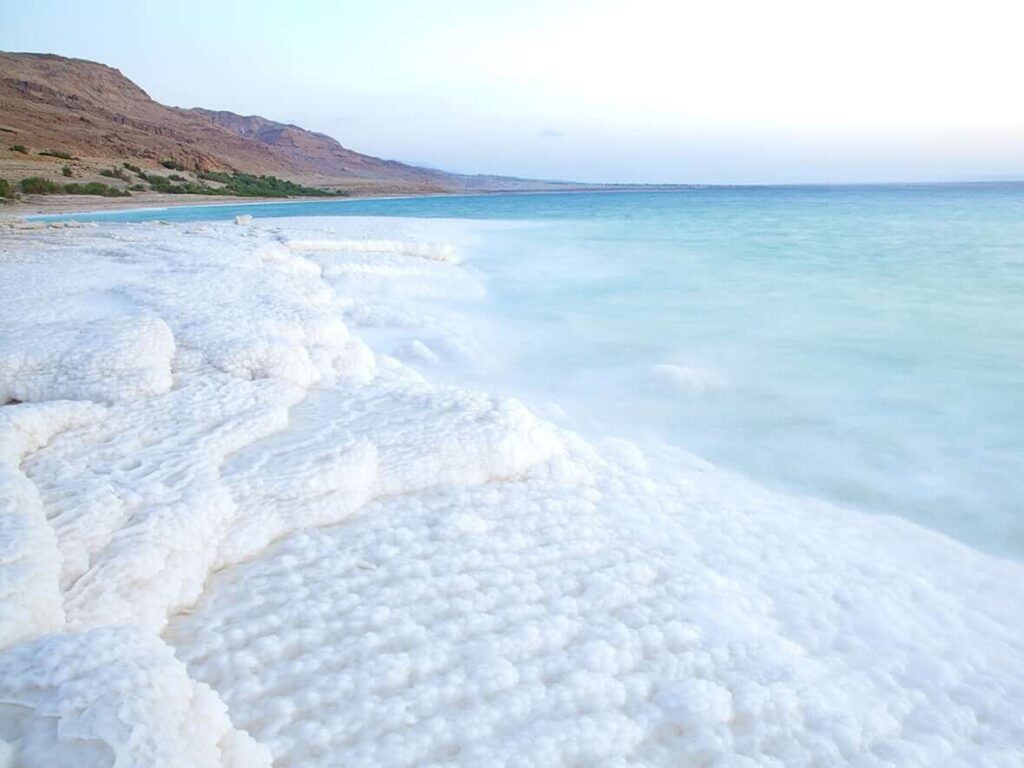
Image by DeadSea.com
The Dead Sea, renowned for its extraordinary buoyancy, is a salt lake bordered by Jordan to the east and Israel and the West Bank to the west. Its shores, at over 430 meters below sea level, mark the Earth’s lowest elevation on land. The lake’s salinity, approximately 34%, inhibits aquatic life, hence its name. The Dead Sea’s mineral-rich mud and waters are famed for their health benefits, drawing visitors worldwide for therapeutic and leisure purposes. This unique body of water is shrinking due to water diversion, posing ecological challenges.
18. Moraine Lake
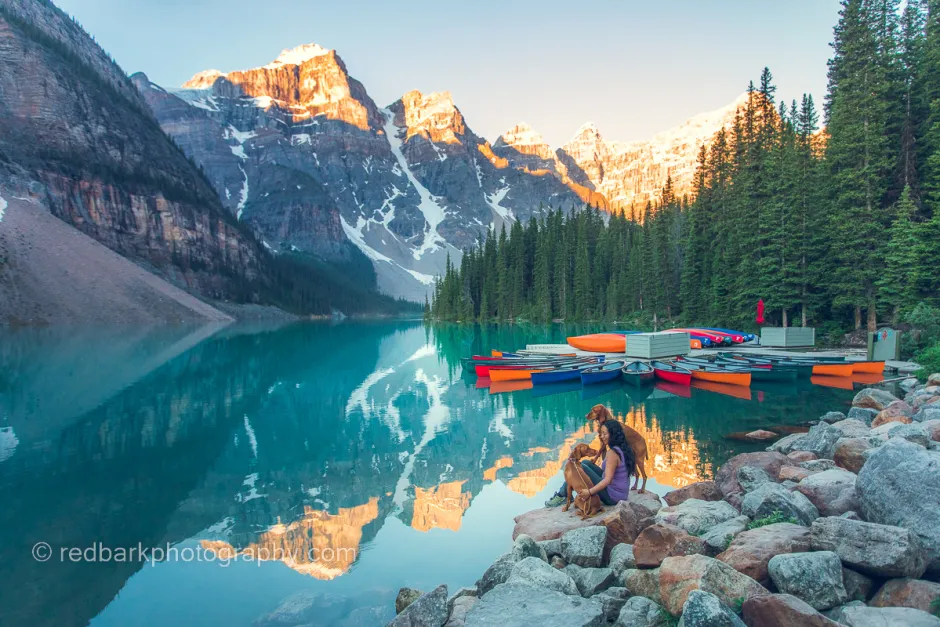
Image by TheDogWalksMe.com
Moraine Lake, a spectacular glacially-fed lake located in Banff National Park, Alberta, Canada, is renowned for its vivid turquoise hues, a result of light refracting off the rock flour deposited in the lake by surrounding glaciers. Nestled in the Valley of the Ten Peaks, the lake’s stunning scenery is amplified by its backdrop of majestic snow-capped mountains, making it a photographer’s paradise. Though less famous than its neighbor, Lake Louise, Moraine Lake offers tranquility and breathtaking beauty, peaking in late June when it is fully thawed.
19. Mount Kilimanjaro
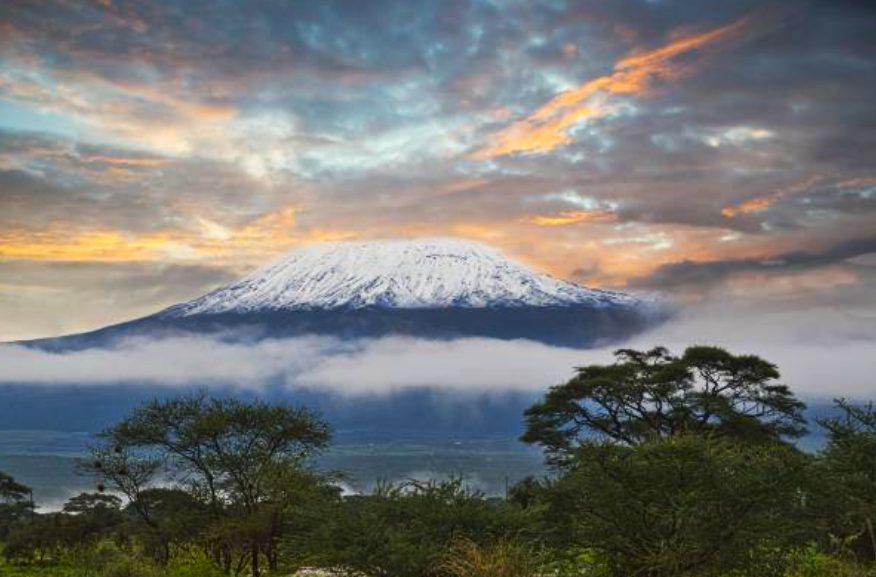
Image by SecretAfrica.com
Mount Kilimanjaro, Africa’s tallest peak, towers at 5,895 meters above sea level in Tanzania. This dormant volcano, renowned for its snow-capped summit, is a beacon for climbers worldwide, offering relatively accessible routes. Kilimanjaro is composed of three cones—Kibo, Mawenzi, and Shira—with Uhuru Peak on Kibo being the highest point. The mountain’s diverse ecosystems range from lush rainforests to alpine deserts, supporting a variety of wildlife. Each year, thousands embark on the challenging yet rewarding trek to its summit, attracted by the majestic landscapes and the possibility of standing atop Africa.
20. The Sundarbans
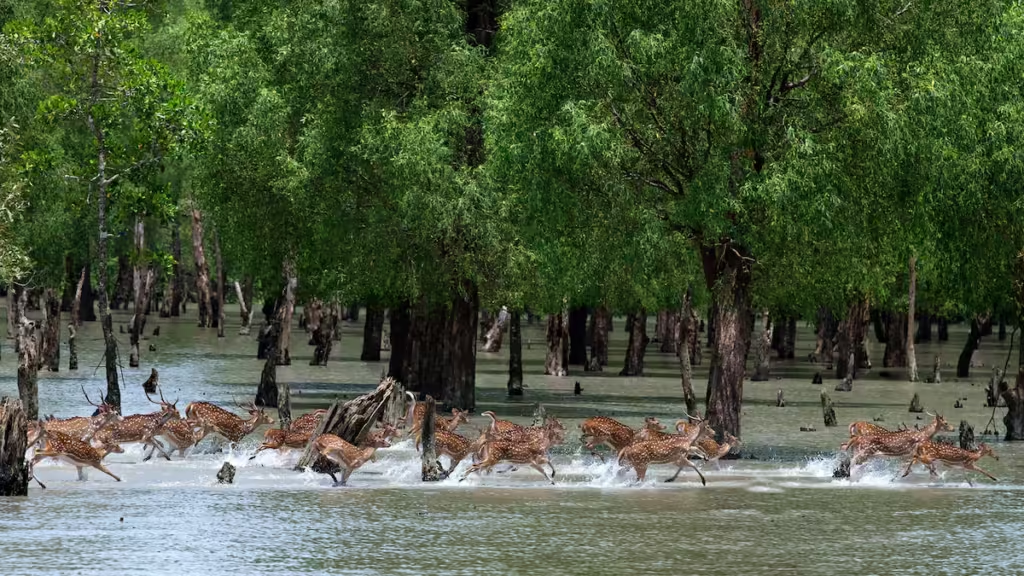
Image by National Geographic
The Sundarbans, a UNESCO World Heritage Site, is the largest mangrove forest in the world, sprawling across Bangladesh and India. This intricate network of tidal waterways, mudflats, and small islands is renowned for its unique biodiversity, including the iconic Bengal tiger, adapted to a life in this aquatic environment. The forest supports an array of species from saltwater crocodiles to various bird species. The Sundarbans acts as a vital barrier against the impacts of climate change, protecting inland areas from storm surges and erosion, showcasing the critical role of natural habitats in environmental protection.
21. Bay of Fundy
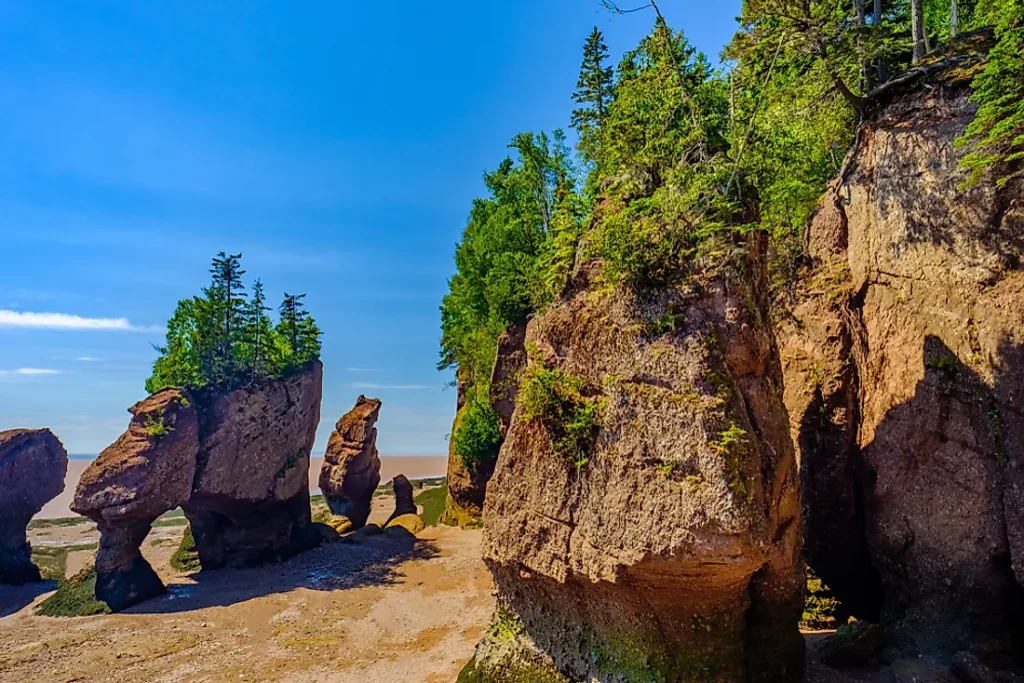
Image by World Atlas
The Bay of Fundy, located between the Canadian provinces of New Brunswick and Nova Scotia, is celebrated for having the highest tides in the world, with water levels fluctuating up to 16 meters twice a day. This natural wonder is a hotspot for whale watching, as several species, including the humpback and the rare North Atlantic right whale, frequent its nutrient-rich waters. The bay also features unique rock formations and fossil discoveries that reveal ancient geological histories. Its dramatic coastal landscapes attract tourists and nature enthusiasts alike, who come to experience its tidal phenomena and marine biodiversity.
22. Masurian Lake District
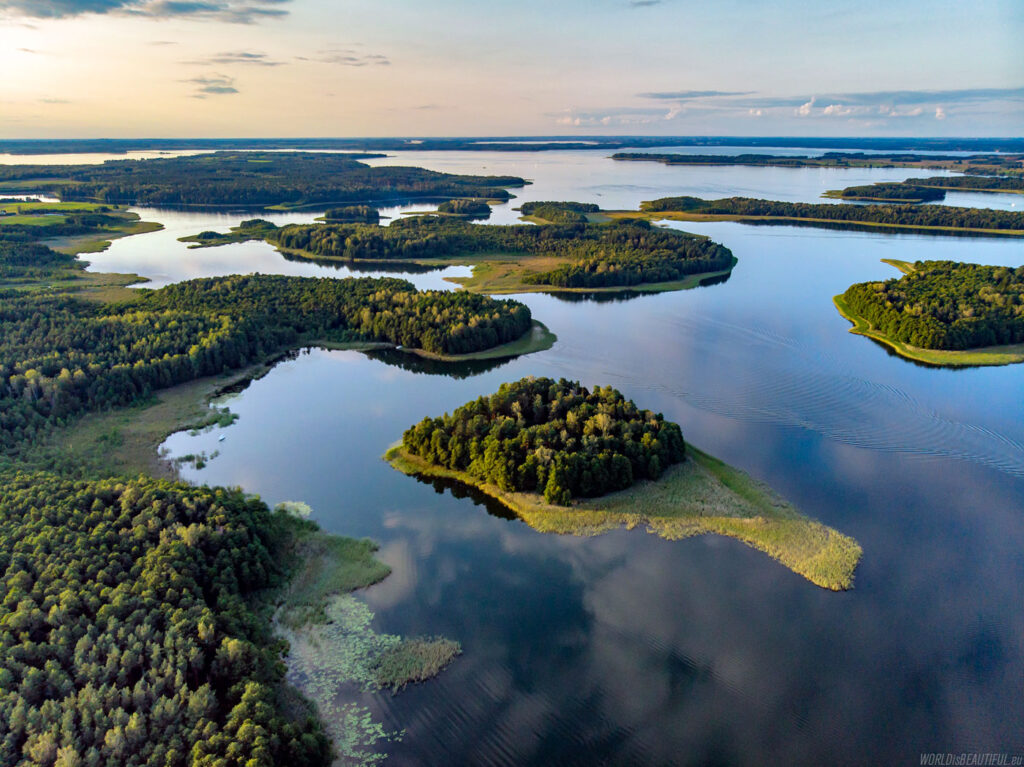
Image by Foto Podróże
The Masurian Lake District in northeastern Poland is a tranquil haven of over 2,000 lakes connected by rivers and canals, earning it the title of one of Europe’s most beautiful lake districts. This idyllic region is a paradise for water sports enthusiasts, offering sailing, kayaking, and fishing amidst serene natural landscapes. The area is also rich in wildlife, with lush forests home to deer, boars, and a variety of bird species. Quaint towns and historical sites dot the landscape, blending cultural heritage with natural beauty, making it a perfect escape for nature lovers and history buffs alike.
23. Milford Sound
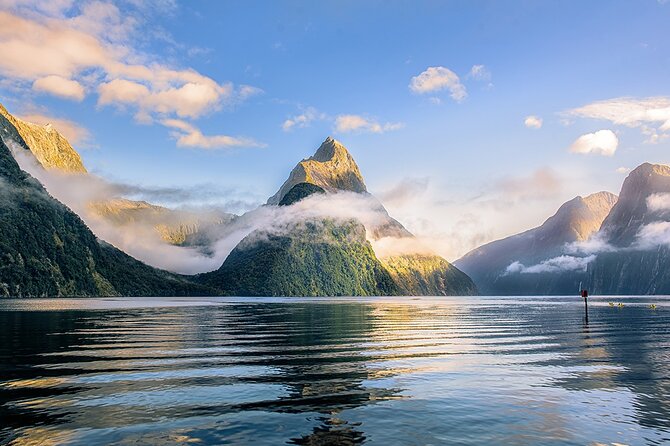
Image by Viator.com
Milford Sound, located in New Zealand’s South Island within Fiordland National Park, is a stunning fusion of natural features with towering cliffs and dramatic waterfalls plunging into deep blue waters. Often described as the ‘eighth wonder of the world,’ it is one of the country’s most breathtaking destinations. Rain or shine, the area’s beauty is unmatched, with lush rainforests, diverse wildlife, including seals and penguins, and the iconic Mitre Peak. Boat tours offer visitors a close encounter with the sound’s majestic scenery and tranquil waters.
24. Maldives
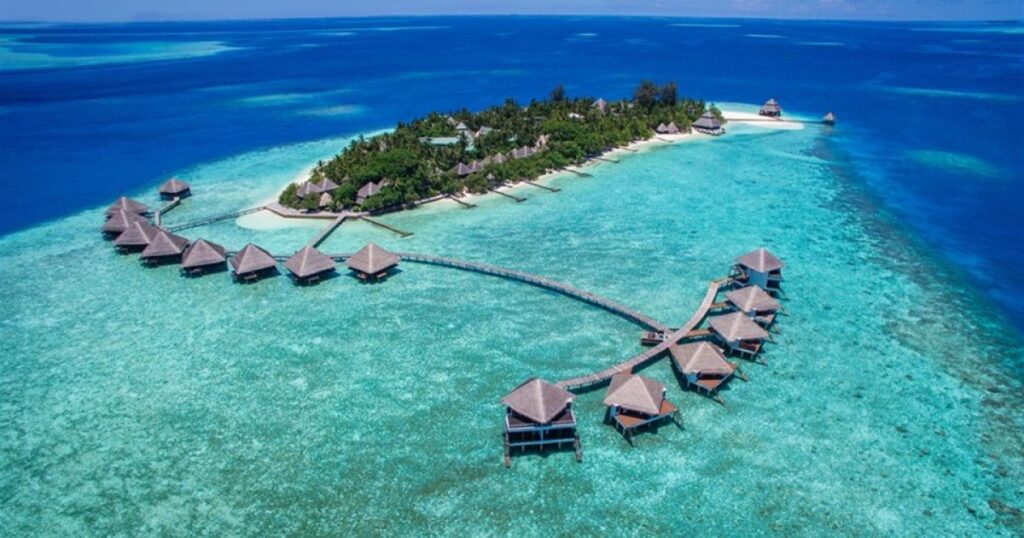
Image by VisitMaldives.com
The Maldives, a tropical paradise in the Indian Ocean, comprises over 1,000 coral islands known for their stunning white sandy beaches, crystal-clear turquoise waters, and vibrant marine life. This idyllic destination is synonymous with luxury, offering overwater bungalows and secluded resorts that provide an exclusive getaway experience. Renowned for its snorkeling and diving opportunities, visitors can explore the colorful coral reefs, swim alongside manta rays and sea turtles, or simply relax on the sun-drenched beaches. The Maldives embodies the quintessential beach holiday, promising serenity and breathtaking natural beauty.
25. Angel Falls
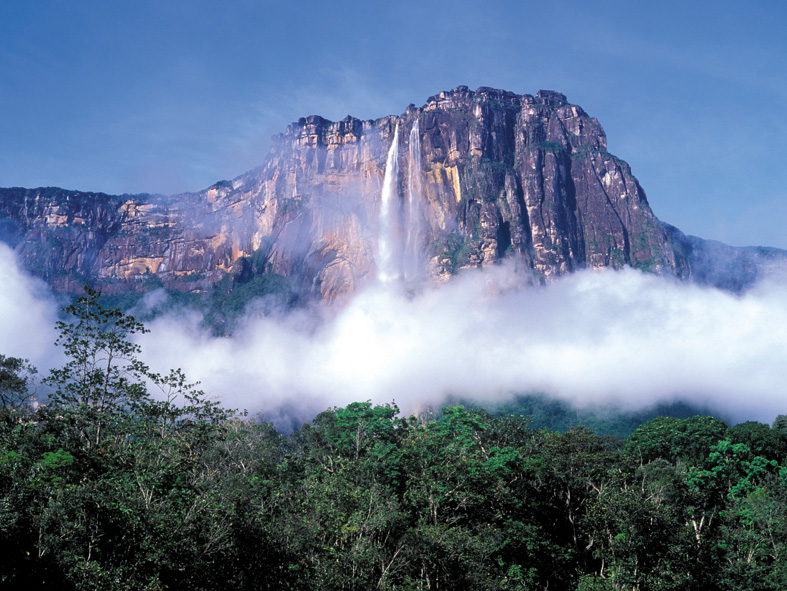
Image by New7WondersFoundation.com
Angel Falls, located in Venezuela’s Canaima National Park, stands as the world’s highest uninterrupted waterfall, plunging an astonishing 979 meters from the top of Auyán-tepui mountain. Named after Jimmy Angel, the pilot who publicized its existence in 1933, the falls are a breathtaking spectacle, especially during the rainy season when they become a thunderous cascade. Surrounded by lush rainforest and tepui formations, reaching Angel Falls is an adventure, involving river trips and treks through beautiful yet rugged terrain, offering an unforgettable experience in one of the planet’s most pristine environments.
26. The Black Forest
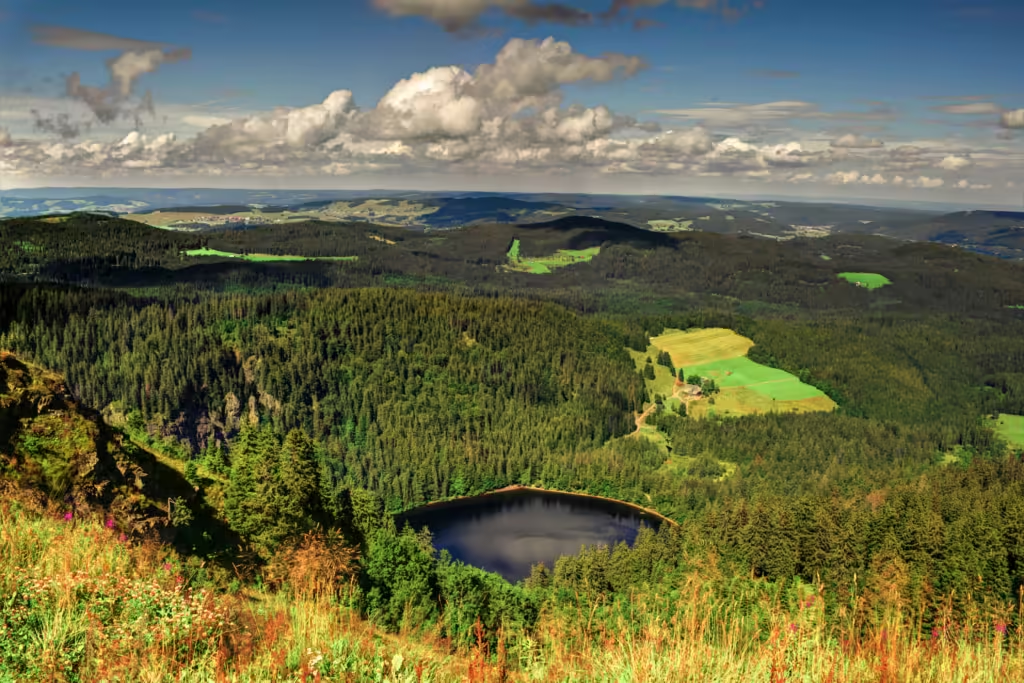
Image by VeenaWorld.com
The Black Forest, located in southwestern Germany, is a picturesque region renowned for its dense, evergreen woodlands and quaint villages. Known in German as Schwarzwald, this area offers a blend of natural beauty and traditional culture. Visitors can explore its extensive network of hiking and biking trails, marvel at panoramic views from scenic peaks, and discover serene lakes tucked away in the forest. The Black Forest is also famous for its cuckoo clocks, delicious Black Forest cake, and cozy, half-timbered houses, making it a captivating destination for travelers seeking both outdoor adventures and cultural experiences.
27. The Matterhorn
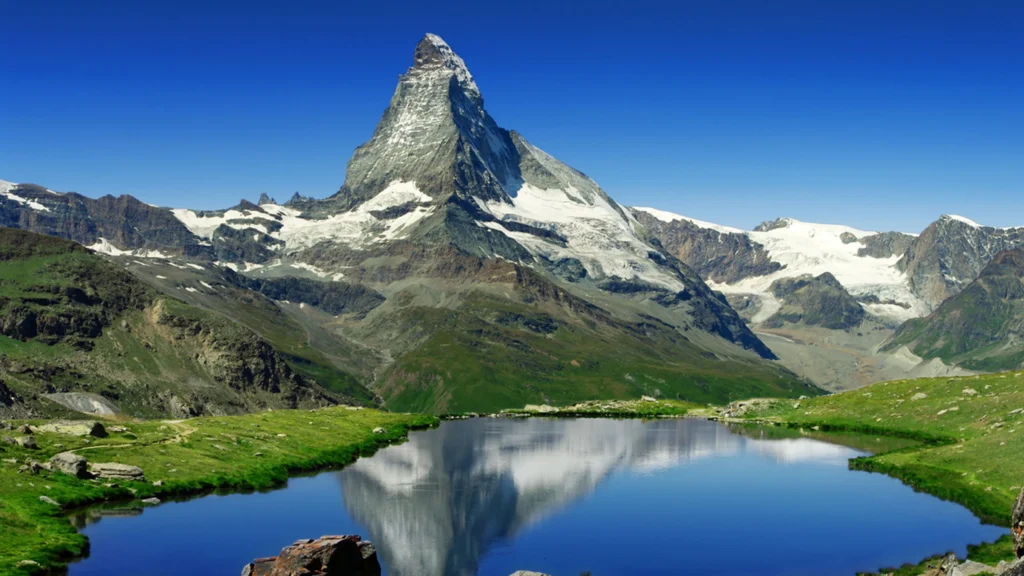
Image by www.outsideonline.com
The Matterhorn, straddling the border between Switzerland and Italy, is one of the most iconic and formidable peaks in the Alps. Towering at 4,478 meters, its distinct pyramid shape is recognized worldwide. A symbol of the challenges and beauty of mountaineering, the Matterhorn attracts climbers eager to conquer its steep faces and ridges. Zermatt, the nearby Swiss village, serves as the base for expeditions and offers stunning views of the mountain, making it a prime destination for tourists and outdoor enthusiasts seeking the awe-inspiring landscape of the Swiss Alps.
28. The Cliffs of Moher

Image by www.cliffs-moher.com
The Cliffs of Moher, located on the west coast of Ireland in County Clare, are one of Ireland’s most spectacular natural wonders. Rising dramatically to heights of up to 214 meters (702 feet) above the Atlantic Ocean, these majestic sea cliffs stretch for about 14 kilometers (9 miles). Offering breathtaking views, they captivate visitors with their sheer size and the vast expanse of ocean visible from their edge. The Cliffs are home to a rich variety of bird life and are part of the UNESCO Global Geopark, attracting tourists from around the world who come to marvel at the stunning landscape and enjoy the serene beauty of Ireland’s coastline.
29. Vesuvius

Image by See Pompeii
Mount Vesuvius, towering over the Bay of Naples in Italy, is one of the world’s most famous and dangerous volcanoes. Known for its catastrophic eruption in AD 79 that buried the ancient cities of Pompeii and Herculaneum under ash and pumice, Vesuvius remains an emblem of nature’s unpredictability. This active stratovolcano has erupted many times since, its last major eruption occurring in 1944. Despite the risks, its slopes are densely populated, and it continues to be a subject of intense scientific study and a popular tourist attraction, offering breathtaking views of the surrounding Italian landscape.
30. Yushan
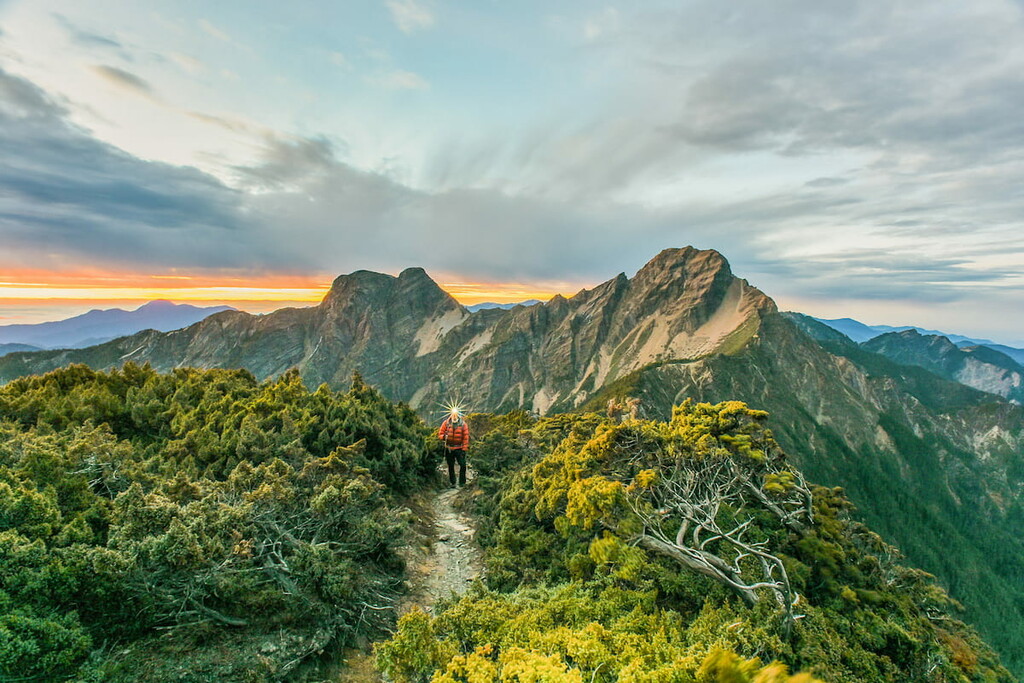
Image by PeakVisor
Yushan, also known as Jade Mountain, stands as the highest peak in Taiwan and is a prominent feature of the Yushan Range. Towering at 3,952 meters (12,966 feet) above sea level, this majestic mountain is part of the Yushan National Park, which boasts a rich diversity of flora and fauna, stunning landscapes, and challenging hiking trails. Yushan’s peak, often capped with snow in winter, presents a formidable challenge to climbers, while offering breathtaking views and a sense of serenity to those who reach its summit.
31. Mud volcanoes of Azerbaijan

Image by Azerbaijan Travel International
The Mud Volcanoes of Azerbaijan, located on the Absheron Peninsula, comprise a surreal and strikingly unique natural phenomenon. These geological formations, numbering over half of the world’s mud volcanoes, spew cold mud, gas, and sometimes flames from deep underground, painting a landscape that seems otherworldly. This region attracts tourists and scientists alike, intrigued by its lunar-like terrain and the insights it offers into geochemical processes. The mud volcanoes are not only a spectacle of nature’s creativity but also play a role in studying methane emissions and planetary geology.
32. Uluru

Image by Globetrotting with Goway – Goway Travel
Uluru, also known as Ayers Rock, is a massive sandstone monolith in the heart of the Northern Territory’s arid “Red Centre” in Australia. Sacred to the indigenous Anangu people, Uluru is deeply embedded with cultural and spiritual significance, featuring in many Aboriginal myths and legends. This iconic landmark stands about 348 meters high and is renowned for its striking red hue, which dramatically changes color at sunset and sunrise. Uluru-Kata Tjuta National Park, a UNESCO World Heritage site, protects this natural wonder and its surrounding unique biodiversity.
33. Yellowstone National Park
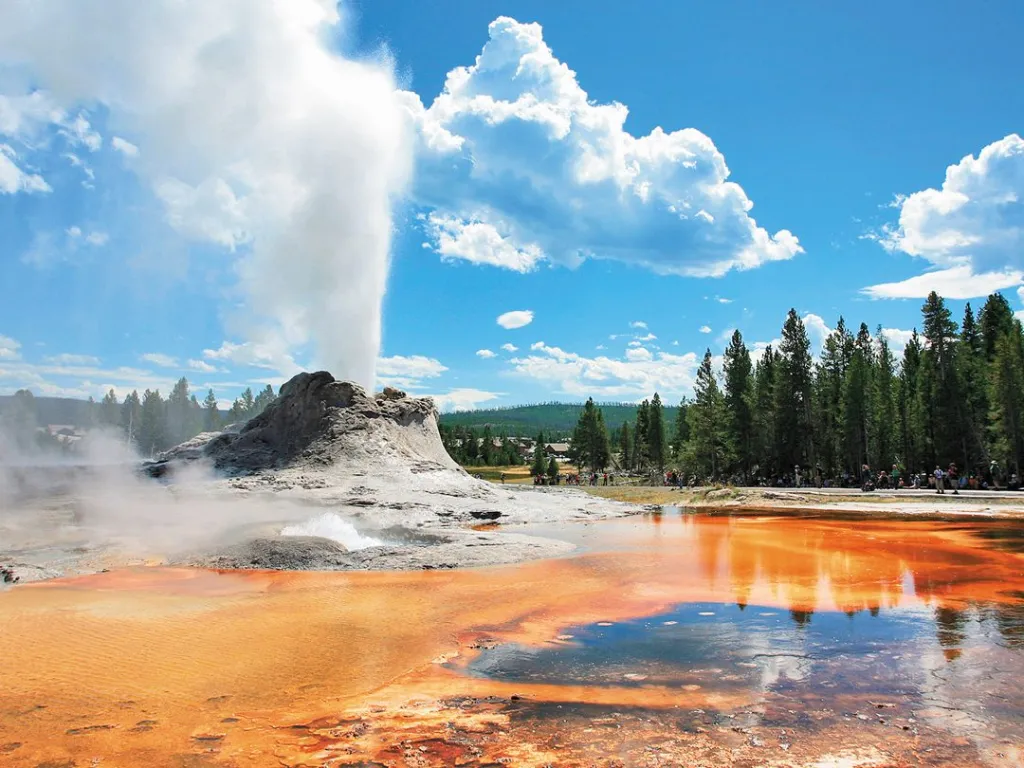
Image by Moon Travel Guides
Yellowstone National Park, established in 1872 as the world’s first national park, is a natural wonderland sprawling across Wyoming, Montana, and Idaho. Renowned for its geothermal features, including the iconic Old Faithful geyser, Yellowstone is home to a vast array of geysers, hot springs, and mudpots. The park’s diverse landscape ranges from rugged canyons and lush forests to vast meadows and rivers, providing habitat for wildlife like bears, wolves, bison, and elk. Yellowstone’s unparalleled geological and ecological diversity attracts millions of visitors each year, offering them a glimpse into the power and beauty of nature’s processes.
34. The Sahara Desert

Image by Smithsonian Magazine
The Sahara Desert, stretching across North Africa, is the largest hot desert in the world, covering approximately 9 million square kilometers. Characterized by vast sand dunes, rocky plateaus, and dry valleys, it forms a starkly beautiful landscape that has intrigued explorers and locals alike for centuries. Despite its harsh conditions, the Sahara is home to resilient communities of people, as well as unique flora and fauna adapted to survive in extreme dryness and heat. The Sahara’s climate is one of extremes, with scorching days and chilly nights, creating a challenging environment for life.
35. Salar de Uyuni
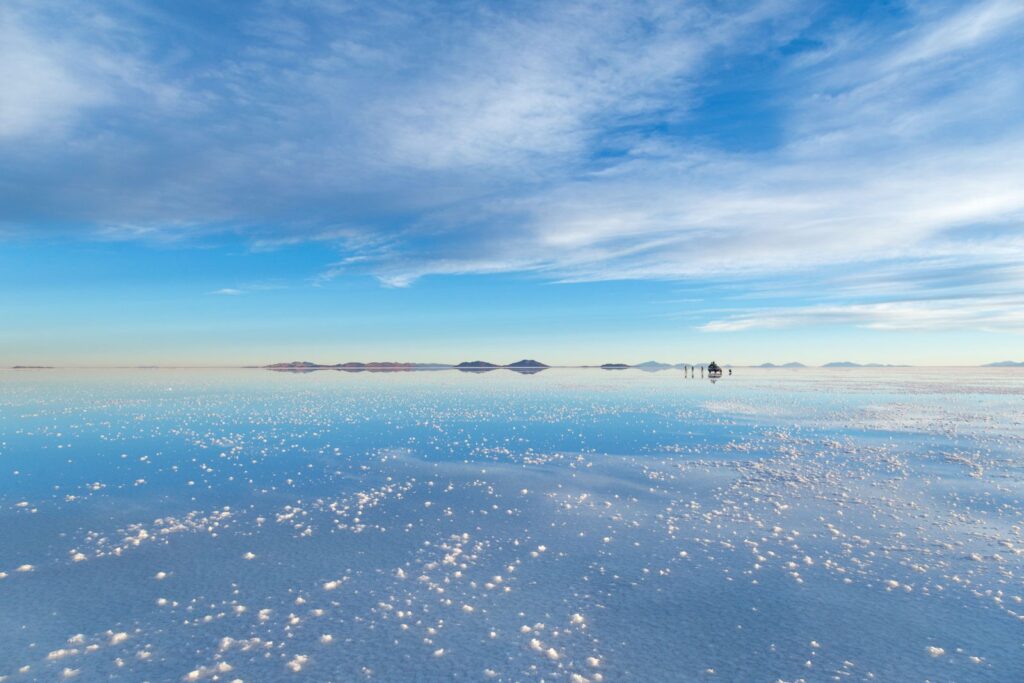
Image by Tales From The Lens
Salar de Uyuni, located in southwest Bolivia, is the world’s largest salt flat, covering over 10,000 square kilometers. Formed from prehistoric lakes, it transforms into a surreal landscape, especially during the rainy season when a thin layer of water turns it into a vast mirror, flawlessly reflecting the sky. This unique phenomenon makes it a photographer’s paradise and a key tourist attraction. Besides its breathtaking beauty, Salar de Uyuni is rich in lithium, a vital resource for making batteries, contributing significantly to the global supply.
36. Pando
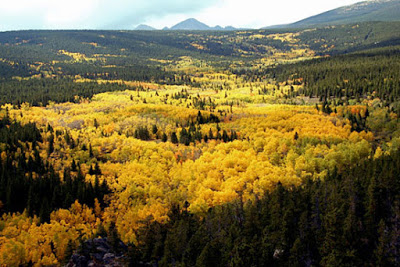
Pando, known as the “Trembling Giant,” is an extraordinary natural wonder located in Fishlake National Forest, Utah, USA. This unique organism is not a forest of individual trees, but rather a single clonal colony of quaking aspen (Populus tremuloides), genetically identical and connected by a single root system. Spanning over 106 acres and weighing an estimated 6,000,000 kilograms, Pando is considered the heaviest and one of the oldest living organisms on Earth, estimated to be thousands of years old. Its name, meaning “I spread” in Latin, aptly describes its expansive and enduring nature.
37. Zhangjiajie

Image by Viator
Zhangjiajie, located in Hunan Province, China, is a mesmerizing natural wonder renowned for its towering sandstone pillars, some reaching over 1,000 meters in height, amidst lush vegetation. This UNESCO World Heritage site, part of the larger Wulingyuan Scenic Area, inspired the breathtaking floating mountains in the film “Avatar.” The area’s unique landscape is dotted with deep ravines, glistening streams, and rich biodiversity, including several endangered species. Zhangjiajie’s ethereal beauty attracts tourists and nature enthusiasts from around the globe, offering them a glimpse into a nearly untouched, fantastical world.
Our exploration through Earth’s 37 awe-inspiring natural wonders underscores the boundless beauty and diversity our planet holds. As we journeyed from the expansive deserts of Africa to the dramatic eruptions of European volcanoes, and marveled at the rare natural phenomena scattered across the globe, it became evident that the world’s wonders are not confined to a select few.





















